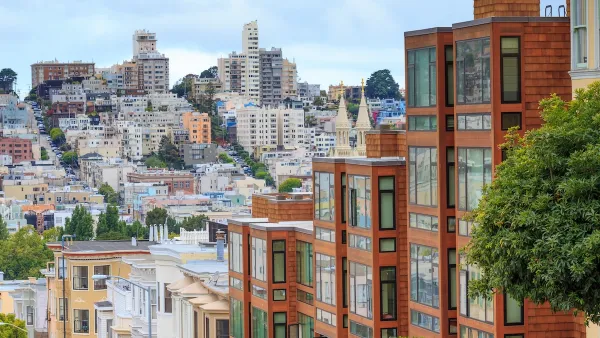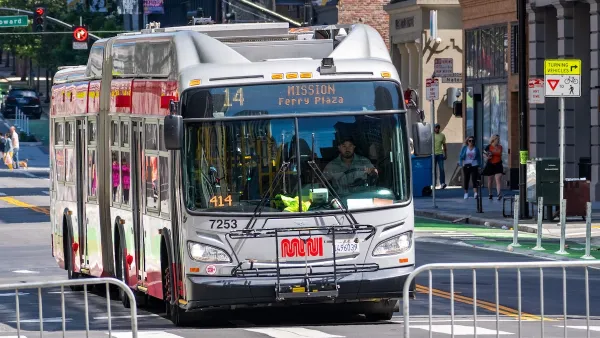Parking lots hurting for cars, garages being converted to storage, corporate headquarters moving from edge city to center city—these are some of things happening in U.S. cities that hold promise for change, writes former SPUR ED Jim Chappell.
In San Francisco, apartment house owners are applying to the Planning Commission to repurpose their garages to storage and car share services are putting a dent in the parking lot business, notes Jim Chappell, former Executive Director of the San Francisco Planning and Urban Research Association (SPUR) and now a teacher and speaker on urban design and a consultant on subjects like Business Improvement Districts (BIDs). Across the the country, not only are people moving back to urban centers, but now corporate headquarters are leaving suburbs for downtowns too. While suburbs aren't disappearing, they are densifying. Bricks and mortar retail is shrinking while condominium and apartment buildings are building sorting rooms for the great increase in deliveries from online shopping. Chappell notes that while these things appear to be positive signs, it's not yet fully clear where they will lead. He believes:
. . . it is up to architects and planners and other land use experts to imagine the next iteration of the city. Lets try:
- A return to the once common rich mix of urban uses, in contrast to cities defined by rigid zoning categories that emphasize differences rather than compatibilities;
- Flexible working and living spaces as couple formation, work life and home life morph in and out of one another;
- Smaller living spaces as socialization moves from the private living room to more public social spaces;
- Suburbs becoming more like cities with housing and jobs and services intermixed;
- Cities becoming more like suburbs with open space reclaiming former auto spaces, and the roar of traffic diminished;
- A return to an earlier era as roads are narrowed, sidewalks widened, and quality transit returns as a mode of choice; and
- Rust belt cities revive, capitalizing on the historic investments in buildings and infrastructure that already exist there, and taking pressure off the newer western cities that struggle to provide living and working spaces and the public infrastructure to support them.
FULL STORY: Take me back to tomorrow – Some surprising indicators of change in U.S. cities

Maui's Vacation Rental Debate Turns Ugly
Verbal attacks, misinformation campaigns and fistfights plague a high-stakes debate to convert thousands of vacation rentals into long-term housing.

Planetizen Federal Action Tracker
A weekly monitor of how Trump’s orders and actions are impacting planners and planning in America.

Chicago’s Ghost Rails
Just beneath the surface of the modern city lie the remnants of its expansive early 20th-century streetcar system.

Bend, Oregon Zoning Reforms Prioritize Small-Scale Housing
The city altered its zoning code to allow multi-family housing and eliminated parking mandates citywide.

Amtrak Cutting Jobs, Funding to High-Speed Rail
The agency plans to cut 10 percent of its workforce and has confirmed it will not fund new high-speed rail projects.

LA Denies Basic Services to Unhoused Residents
The city has repeatedly failed to respond to requests for trash pickup at encampment sites, and eliminated a program that provided mobile showers and toilets.
Urban Design for Planners 1: Software Tools
This six-course series explores essential urban design concepts using open source software and equips planners with the tools they need to participate fully in the urban design process.
Planning for Universal Design
Learn the tools for implementing Universal Design in planning regulations.
planning NEXT
Appalachian Highlands Housing Partners
Mpact (founded as Rail~Volution)
City of Camden Redevelopment Agency
City of Astoria
City of Portland
City of Laramie





























